Young striker Dzenan Pejčinović moved from FC Augsburg’s youth team to VfL Wolfsburg as their fifth signing in the summer transfer window. At his new club, he has signed a professional contract until 2027. The 17-year-old made four appearances for FCA U19s last season, scoring one goal, and made 16 appearances for FCA U17s, scoring 12 goals. In addition, the native of Munich has 16 international matches for the German U17 national team, in which he scored 15 times.
“We are very pleased that we were able to convince Dzenan of our path and our philosophy,” began VfL sporting director Marcel Schäfer. He has a lot of qualifications to be able to assert himself in the Bundesliga and, despite his young age, has come a long way in his footballing development. He has good technique, has a good overview of the game, moves towards goal and is also a real team player. Now it’s about gradually introducing him to the requirements of the Bundesliga and giving him the time he needs to develop at this high level.”
This tactical analysis provides an in-depth scout report of VfL Wolfsburg’s Dzenan Pejčinović and examines the 17-year-old’s playing style and characteristics. In addition to understanding how and where Pejčinović plays, this analysis will also identify the style of tactics where he is most likely to thrive. Is he the next player to make his way into professional football under Niko Kovac?
Player Profile
Dženan Pejčinović joined FC Augsburg youth academy after a move from FC Bayern Munich back in 2017. He has been in phenomenal form last season – he scored 12 goals in 16 games for Augsburg U17 and 15 goals in just 16 games for Germany U17 national team. Clubs like Manchester City and several Serie A clubs were interested in him.
At the beginning of the new season 2022/23, Pejčinović joined Bundesliga rivals VfL Wolfsburg and already signed a professional contract. Until now, he did not get the chance to prove himself under Wolfsburg’s new head coach Niko Kovac. However, he has already shown his potential in the U19. Pejčinović is considered to be one of the leaders of an extremely interesting generation of German players born in 2005 which includes, among others Arijon Ibrahimovic, Sidney Raebiger, Tom Bischof, Paul Wanner, Laurin Ulrich, and Noel Aseko Nkili.
Dzenan Pejčinović is a tall player with a very good body mass ratio, physical strength, power, stamina, and natural fitness who feels comfortable in contact situations. At the same time, he provides a mixture of the traditional striker and modern-day striker since he is a powerful and determined forward with a killer instinct, but also has an interesting technique on the ball. For a player of his size, Pejčinović provides good pace, agility as well as coordination.
So, Pejčinović brings all types of strikers with him at once. From target player to pressing striker to clipper, the young striker provides everything, and he is very, very good at it. So, the youngster can be described as a complete forward. However, Pejčinović is used to play as a target man most of the time. A target man is a physically strong player, capable of holding on to the ball when under pressure and able to lay off passes to teammates in better positions. The target man is excellent at offensive headers. He is a good player to use in combination with classic wingers or when playing long balls to play out of pressure or when applying a direct or even one-route passing style.
As we can see in his heatmap down below, he likes to drop into deeper areas in the build-up game and then actively contribute to the attacking game of his team.
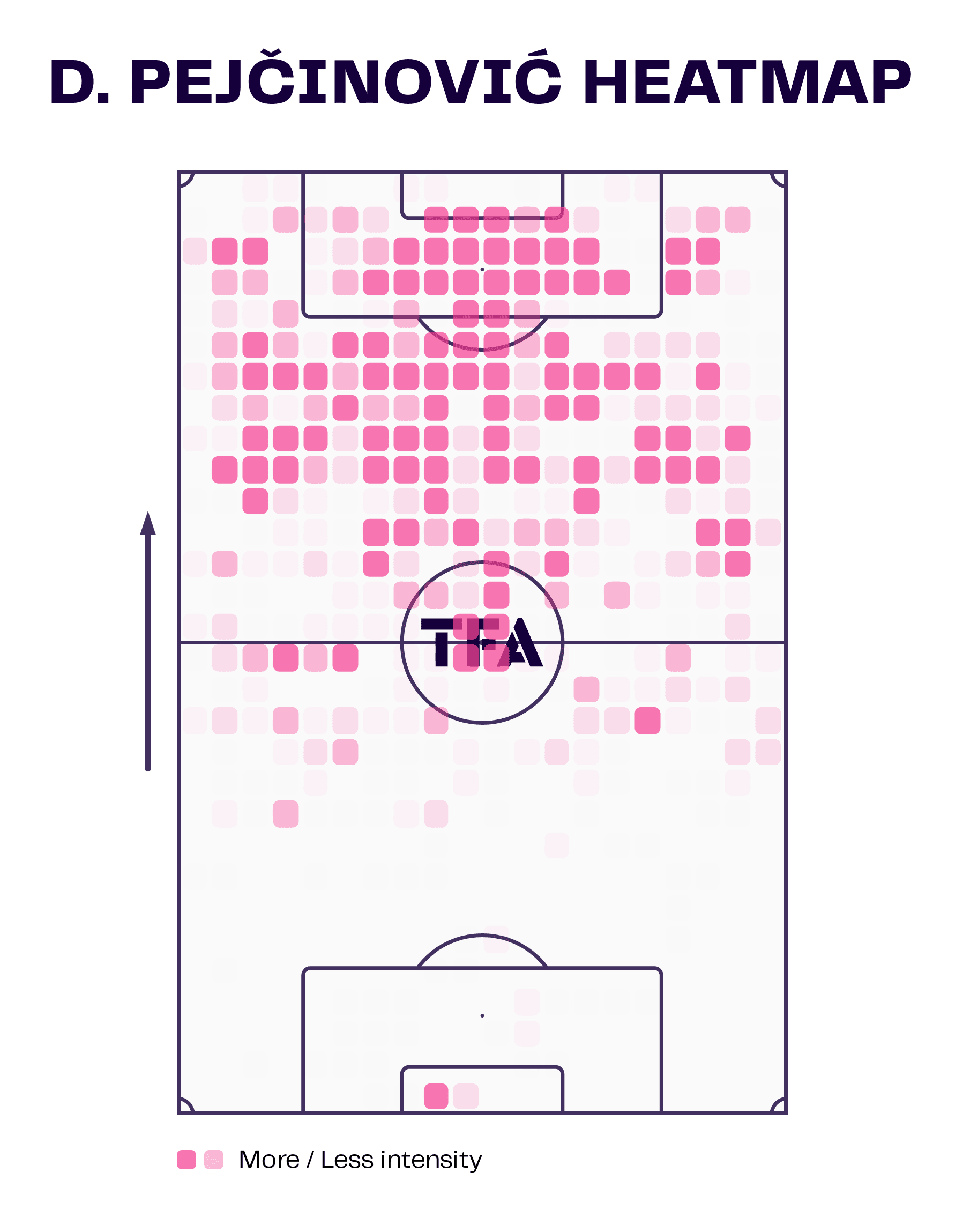
Build-up Game
Pejčinović is outstandingly involved in the game, which is particularly evident in the 15.3 passes received per 90 minutes. He is extremely strong with the back to the opponent’s goal, shielding his massive body against the opponent’s centre-backs.
During the build-up game, Pejčinović often moves deep into midfield. By doing so, he draws defenders with him, in order to create and exploit spaces for his teammates. Afterwards, he usually passes the ball cleanly forward to a teammate with the first contact.
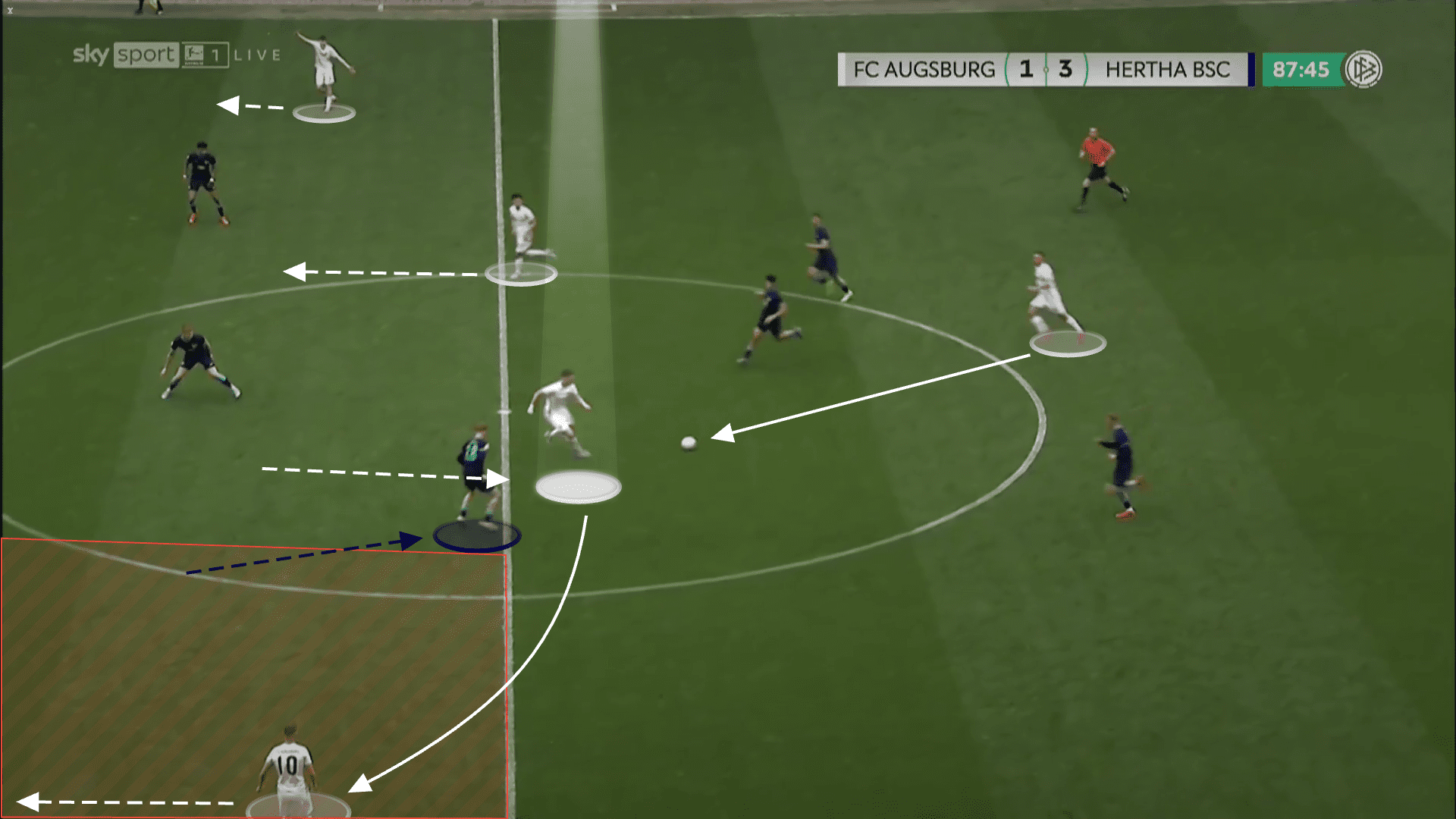
As we can see on his passing map down below, he plays lots of passes from deeper areas out wide to his teammates on the wings.
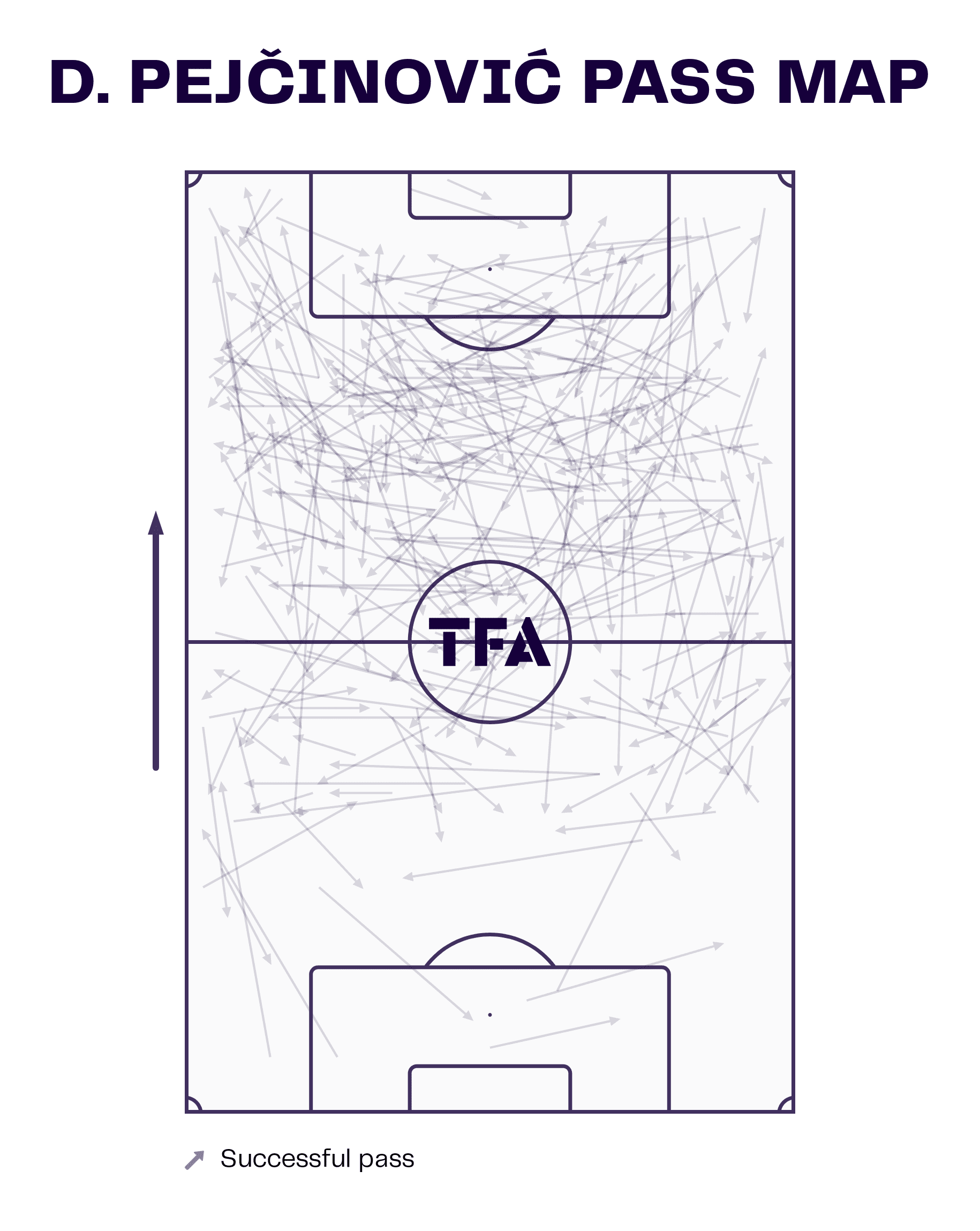
Attacking Phase
Most outstanding for Pejčinović are his killer instinct and his off-the-ball movements in the final third in front of the opponent’s goal. He is a clinical finisher capable on both feet since he is almost perfectly two-footed.
He is cold as ice in finishing. He provides 1.15 goals per 90 minutes at 0.88 xG. In general, he often looks to shoot and finish the attack by scoring himself. 5.06 shots per 90 minutes are recorded there. All in all, 56% of them are on goal.
As we can see on his shot map from the last two seasons (2022/23 and 2021/22), Pejčinović scored 11 goals out of 77 shots. This results in a good conversion rate of 14.3%. His xGoals are 0.17 per shot. He slightly underperforms his xGoals of 12.73 by 1.73 (= 11 goals).
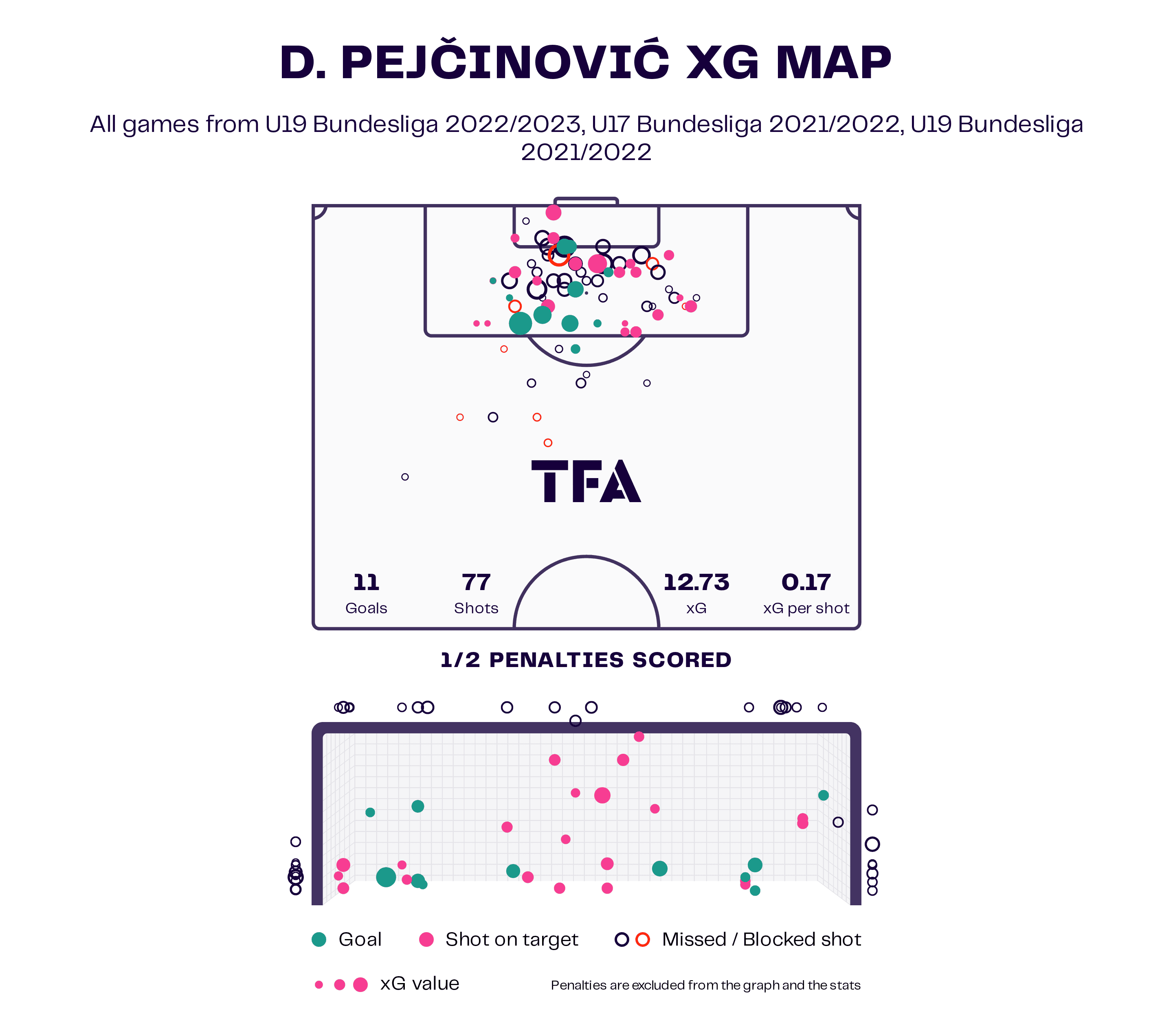
As already mentioned the young striker generates many flick-ons in possession and passes into the channels for his teammates to be utilised. Additionally, he regularly proves a certain cleverness in his off-the-ball movements.
While receiving many through balls, Pejčinović shows great sense of positioning on the opponent’s backline. On the one hand, he likes to drop deep in the area between the lines to receive the ball and to pass the ball to a teammate before starting a run in behind the opponent’s defensive line.
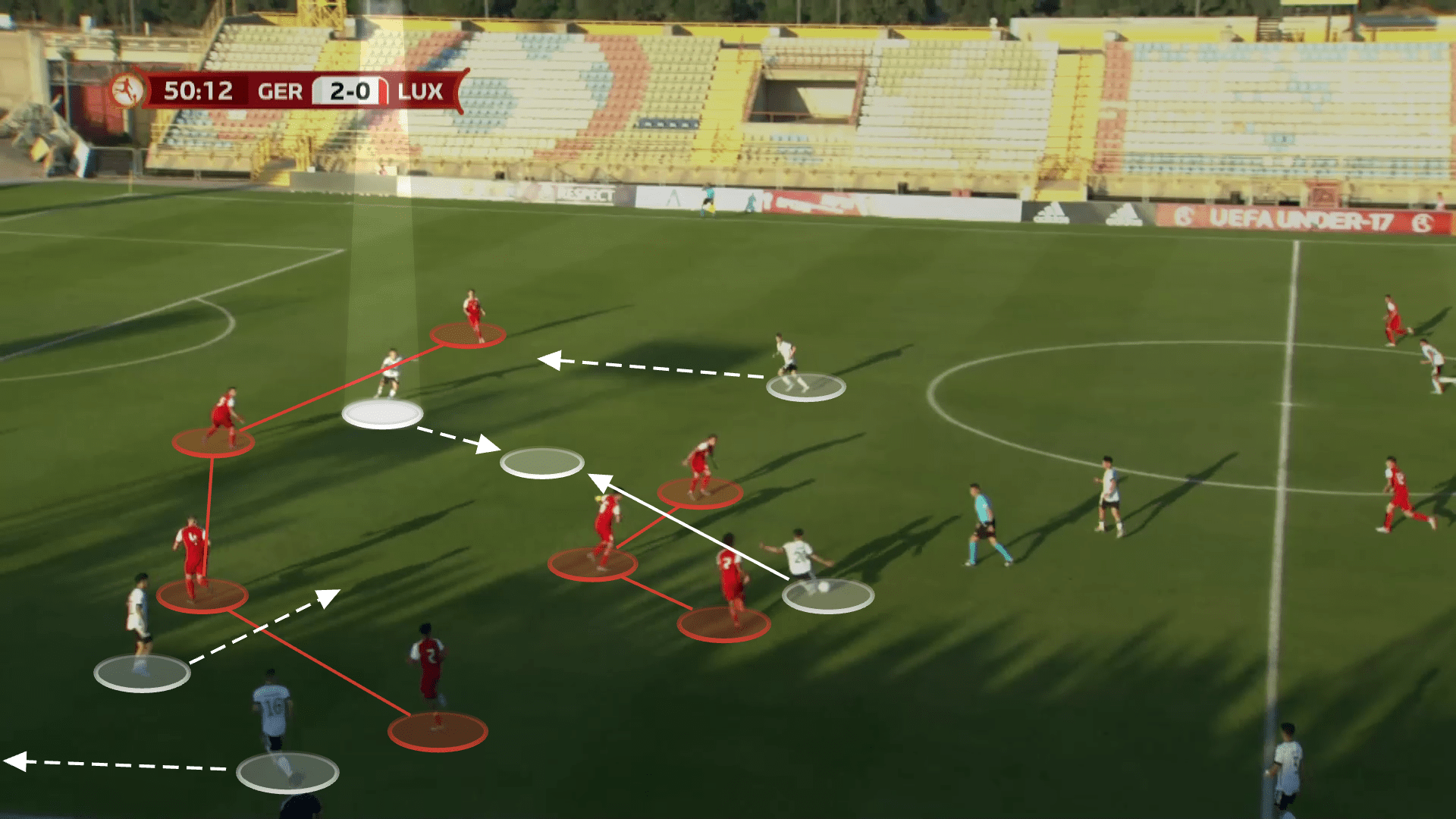
On the other hand, he is also very good at providing well-timed runs in behind the opponent’s backline straight away. Especially in counterattacking situations, this movement is vital for his team.
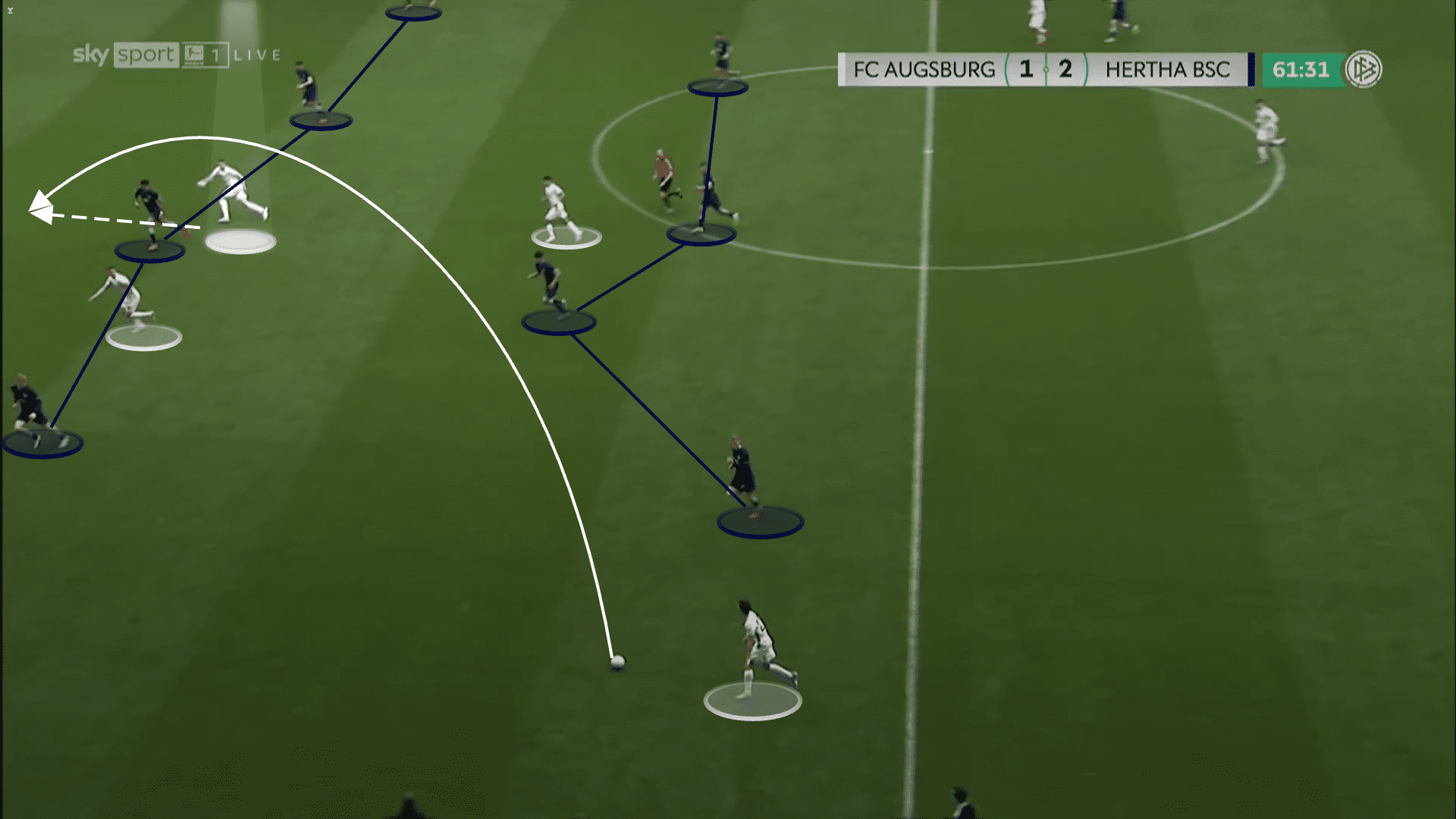
His header game is also worth mentioning. He leads over 8 aerial duels per 90 minutes and wins almost half of them. In addition, he exudes a great presence in the penalty area, which is expressed in 7.06 touches in the opponent’s box per 90 minutes.
Pejčinović is known as an aerial threat in the opposition box. This especially benefits the team by crossing or during offensive set-pieces like free-kicks or corner kicks resulting in Pejčinović being an indirect set-piece threat as well.
Defensive Phase
Adding to that, Pejčinović is of course a dependable option while defending set pieces from opponents.
He is energetic in his defensive work. Unlike traditional forwards, Pejčinović is very active and tenacious in pressing. This results in lots of high regains (24). Most of them are counterpressing recoveries. This means that he wins the ball back within 5 seconds after losing possession. 7 regains are even dangerous, meaning they lead to a shot within 20 seconds after the ball recovery.
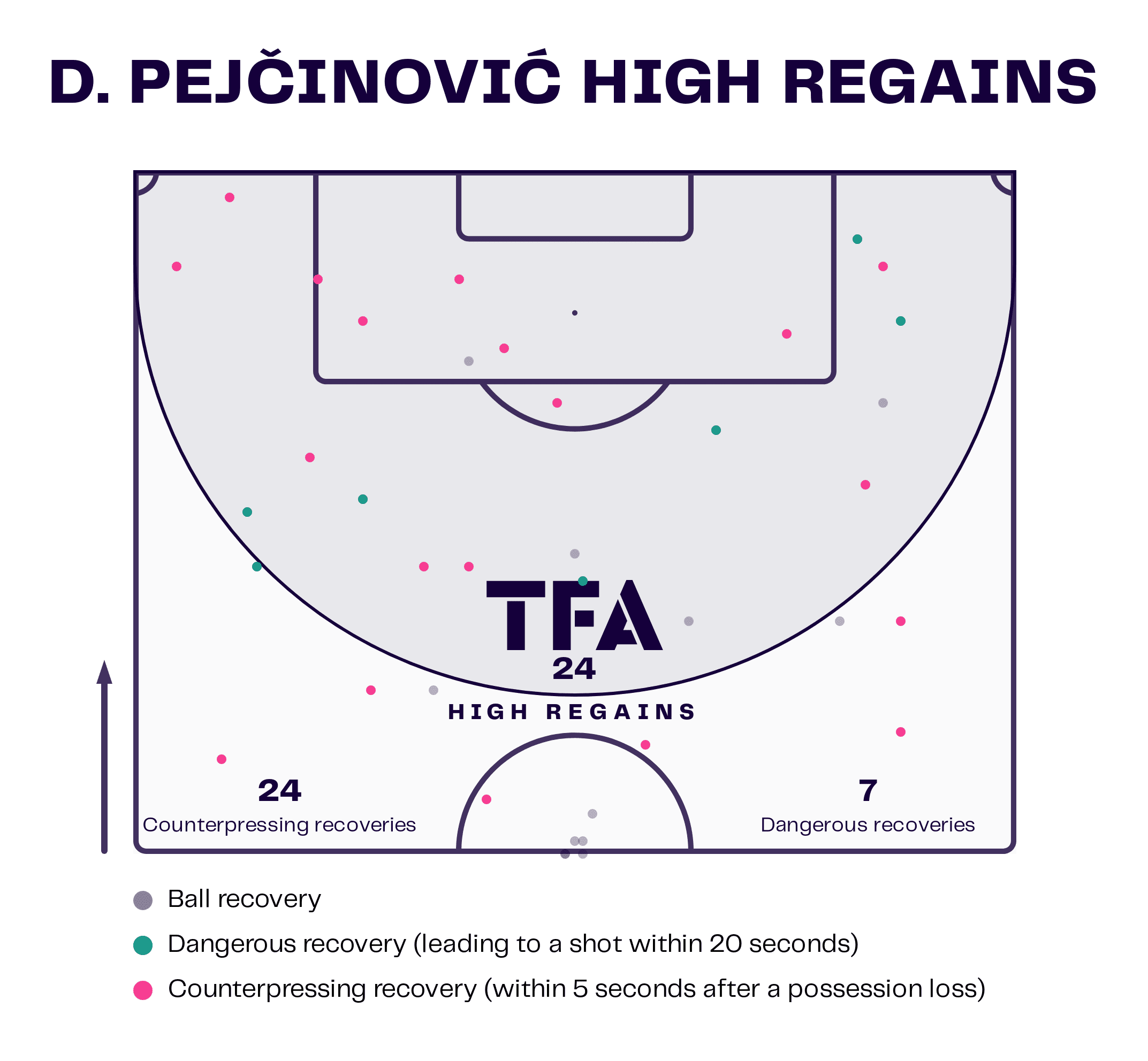
As we can see in his defensive contribution map down below, the striker starts to press high up the pitch even in the opponent’s box. But if this does not work out, he is also working defensively in deeper areas and the own half if necessary. Especially after losing the ball himself, he ambitiously pursues, but often he does it too impetuously. Then, this leads to unnecessary fouls most of the time.
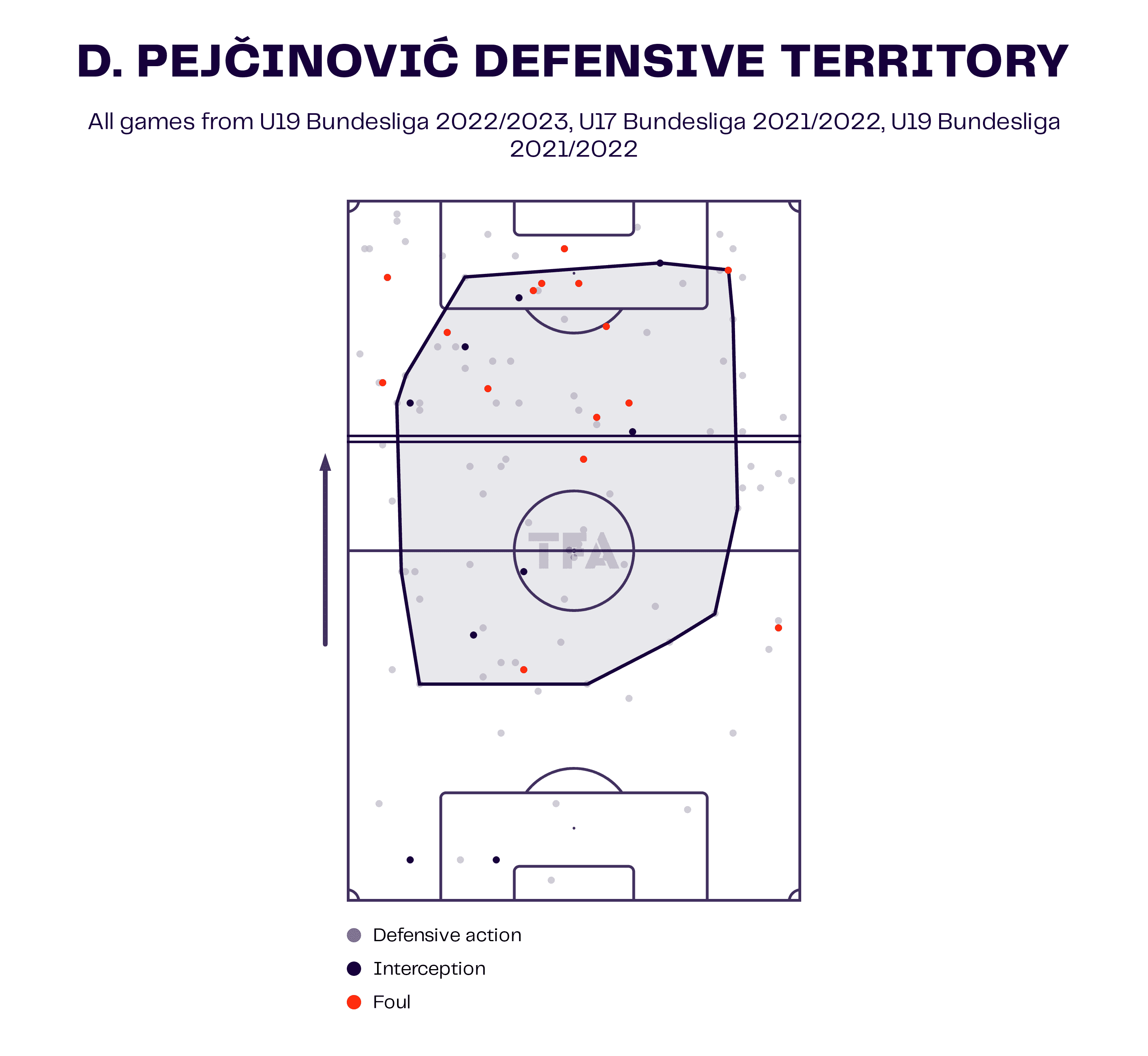
Conclusion
He is very capable of holding up the ball for teammates to provide them with assists when playing with his back to goal. This also proves his good ability to connect with his teammates in midfield. As already mentioned, Pejčinović knows how to use his body to shield the ball from defenders thanks to his quite good technique, strength, and ball control.
Above all, he does what everybody expects from a good striker on a very high standard. He is able to sniff out a goal in any situation. All in all, Pejčinović is the attacking hope of Germany’s national team in future. He definitely deserves the hype and playing time in Wolfsburg’s first team during the current 2022/23 Bundesliga campaign.





Comments